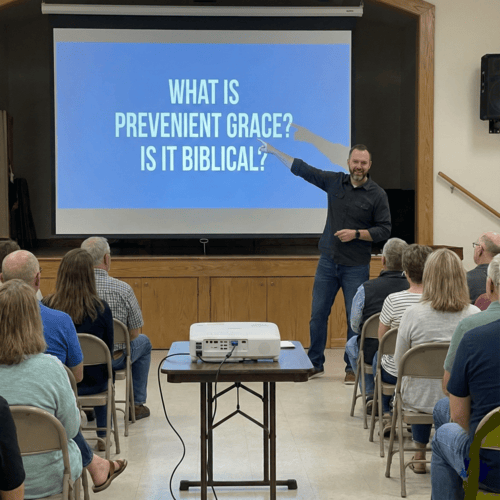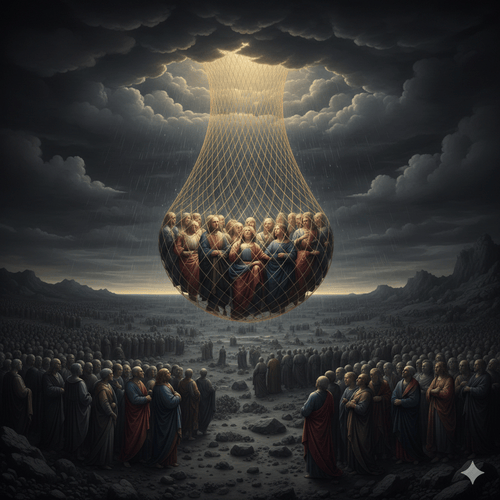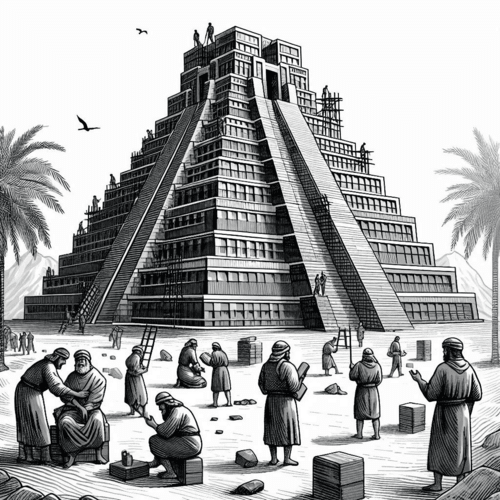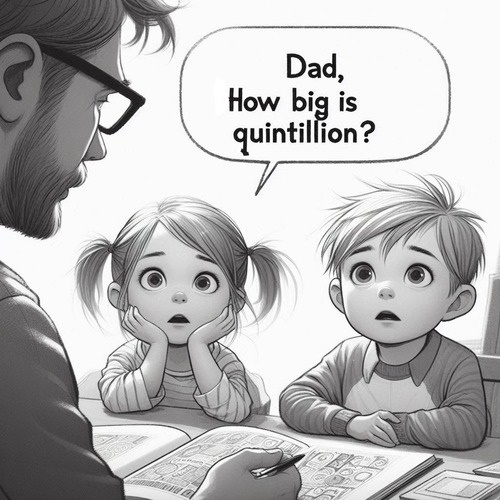Tower of Babel: Historical Evidence Supports Bible Account
The account of the Tower of Babel in Genesis 11:1-9 has long been a subject of debate. Sceptics often dismiss the narrative as myth, while believers affirm its historical reality. This post examines the story of the Tower of Babel in light of recent archaeological and linguistic evidence. Consider with us these compelling reasons to uphold its historicity and understand its profound theological implications.
The Biblical Account
Genesis 11:1-9 recounts the story of humanity’s attempt to construct a colossal tower that would reach the heavens. The Bible specifies this event took place in the valley of Shinar, a region later known as Babylon, where the city’s name, Babel, originally derived. The choice of location underscores the biblical assertion that early human civilisation originated in the Middle East, aligning with the narrative of early human dispersal. This stands in contrast to Darwinian theories that place human origins in Africa.
Driven by pride and the desire to make a name for themselves, the people sought to centralise their power and defy God’s command to spread out and fill the earth. In response, God confused their language, making communication impossible and scattering them across the globe. This brief yet significant passage offers profound insights into early human civilisation, the nature of divine judgment, and the origins of linguistic diversity.
Theological Significance
From a theological perspective, the Tower of Babel narrative is rich with meaning:
- Human Pride and Rebellion: The story illustrates humanity’s sinful inclination to defy God’s commands and seek autonomy apart from Him. The builders’ desire to “make a name” for themselves represents human pride and the quest for self-glory, mirroring the original sin of Adam and Eve in the Garden of Eden.
- God’s Sovereignty: The scattering of the people and the confusion of their language underscore God’s sovereignty over human affairs. Despite humanity’s best efforts, God’s purposes cannot be thwarted. His intervention at Babel ensured His command to fill the earth would be fulfilled.
- The Origin of Languages and Cultures: The division of language at Babel marks the divine origin of linguistic diversity. This act of God laid the foundation for the development of diverse cultures and nations, which plays a central role in His redemptive plan for humanity.
- God’s Plan for Humanity: By scattering the people, God was not merely punishing them but was redirecting them to fulfill His original command to multiply and spread across the earth. This dispersion set the stage for the unfolding of redemptive history, culminating in the spread of the gospel to all nations.
Archaeological Evidence: Mesopotamian Ziggurats
Recent archaeological findings provide compelling support for the historicity of the Tower of Babel account:
- Numerous ziggurats, or stepped pyramid temples, have been discovered in the Mesopotamian region, dating back to the 3rd millennium BC. These structures, built by ancient Sumerians and Babylonians, were often intended to reach the heavens, mirroring the ambitions described in Genesis 11:4.
- The ziggurat, Etemenanki in Babylon, believed to be the prototype for the Tower of Babel, aligns closely with the biblical description. This massive structure, dedicated to the god Marduk, symbolised the human desire to bridge the gap between heaven and earth.
- The construction methods mentioned in Genesis 11, using bricks and tar, correspond with the advanced building techniques found in ancient Mesopotamian ruins. Archaeological evidence shows the use of bitumen as a binding material—this is consistent with the biblical account.
Linguistic Support
The sudden emergence of diverse language families around 3000-2500 BC aligns with the biblical timeline for the Tower of Babel. Linguistic studies indicate a possible common origin for all languages, hinting at an initial single language from which all others diverged.
Recent advances in computational linguistics support the idea of a proto-language: in other words, these advances give credence to the Bible’s account that there was a parent language, or one unified human language, before Babel. This theory complements the narrative of a divinely instigated linguistic divergence.
Historical Babylonian Records
Ancient Mesopotamian texts, such as the Sumerian epic “Enmerkar and the Lord of Aratta,” refer to a time when all humanity spoke a single language. These accounts bear a striking resemblance to the biblical story and suggest a shared memory of an event that led to the diversification of languages.
Babylonian creation myths, such as the Enuma Elish, include themes of divine beings confusing human speech, echoing the narrative of Babel. These parallels highlight the cultural memory of a divine act that altered human communication.
Geographical Consistency
The location of the biblical event, described as a “plain in Shinar” (Genesis 11:2), corresponds with the alluvial plains of southern Mesopotamia. This region, between the Tigris and Euphrates rivers, was a cradle of early civilisation, aligning with the biblical account’s setting and timeline.
Technological Advancements
The Bible’s mention of bricks and tar as building materials reflects the advanced architectural practices of ancient Mesopotamia. Archaeological evidence confirms that bitumen, a form of tar, was commonly used in Babylonian construction, supporting the historical plausibility of the Genesis account.
Cultural Dispersion
The dispersion of people groups described in Genesis 11 aligns with the archaeological record of rapid cultural shifts at the end of the Uruk period in Mesopotamia. This era marked significant societal changes, including the spread of distinct cultural and linguistic identities across the Near East.
Addressing Sceptic Arguments
- Some critics argue the Tower of Babel story is merely an etiological myth—in other words, the story was fabricated solely to explain how languages originated. However, even if the account serves an explanatory purpose, this does not negate its historical basis. The presence of similar themes in ancient Near Eastern literature suggests a shared historical memory.
- The absence of a single, identifiable “Tower of Babel” does not disprove the biblical narrative. Many ziggurats were built, and only a few have survived the ravages of time. The biblical account focuses on the event’s theological and historical significance rather than its architectural details.
Conclusion: Historical Reality with Theological Import
From a Christian perspective, the evidence points to the Tower of Babel account being grounded in historical reality. The archaeological and linguistic findings align with the biblical narrative, affirming its credibility. Yet, the ultimate significance of this event lies not merely in its historical validation but in its profound theological implications.
The Tower of Babel story serves as a powerful reminder of God’s sovereignty and the futility of human pride. It illustrates how God’s purposes prevail, even when humanity seeks to defy Him. As believers, we can view the Tower of Babel as both a historical event and a divinely inspired Scripture, rich with lessons for our faith journey. It calls us to humility before our Creator and to embrace our role in spreading His glory throughout the earth, trusting in His sovereign plan for all nations.
Related FAQs
Couldn’t these ziggurats just be coincidental similarities to the biblical account? While coincidence is possible, the number and specificity of correlations make this unlikely. The ziggurats’ purpose, construction methods, and geographical location all align closely with the biblical narrative. Moreover, the cultural and linguistic evidence supporting a sudden dispersal of peoples adds weight to the biblical account.
How can you claim linguistic diversity emerged suddenly when language evolution is known to be gradual? While languages do evolve gradually, the emergence of distinct language families appears to have occurred relatively rapidly. Computational linguistic studies suggest a common origin for all languages, followed by a period of accelerated diversification. This aligns with the biblical account of a single language being suddenly divided.
Aren’t Mesopotamian myths like the Enmerkar epic just earlier versions the Bible may have copied? While similarities exist, there’s no evidence the Bible copied these myths. Instead, these parallels could indicate a common historical event remembered differently by various cultures. The biblical account is unique in its monotheistic perspective and moral implications, suggesting it’s not merely a copy of polytheistic myths.
How can you trust ancient texts such as Genesis as historical sources? While ancient texts require careful interpretation, dismissing them entirely would be unwarranted. The Bible has repeatedly demonstrated historical accuracy when tested against archaeological evidence. Its reliability, combined with corroborating evidence from other ancient sources and archaeology, supports treating it as a valuable historical source.
Couldn’t the dispersal of cultures in the late 3rd millennium BC be explained by natural migration patterns? While natural migration certainly occurred, the archaeological evidence suggests a more rapid and widespread dispersal than typical migration patterns would produce. This sudden cultural shift, coinciding with linguistic diversification and technological changes, aligns more closely with the biblical account of a divinely-caused dispersion.
If the Tower of Babel event really happened, why haven’t we found the tower itself? The lack of a single, identifiable “Tower of Babel” doesn’t disprove the account. Many ziggurats existed in ancient Mesopotamia, and most have not survived intact. The biblical tower could have been one of these structures, later destroyed or repurposed, as was common in ancient times.
How do you reconcile the Tower of Babel story with scientific explanations for linguistic diversity? The Tower of Babel account and scientific linguistics are not necessarily in conflict. The biblical narrative provides a theological explanation for the origin of linguistic diversity, while linguistics studies the mechanisms of language change. Both can be true, with God using natural processes to accomplish His purposes in confusing language and dispersing humanity.
What archaeological evidence supports the historicity of the Tower of Babel? Numerous archaeological finds, particularly the discovery of ziggurats in Mesopotamia, support the historical reality of the Tower of Babel. These stepped pyramid structures, including the famous Etemenanki ziggurat in Babylon, closely resemble the biblical description of a tower built to reach the heavens. These findings align with the Genesis account, demonstrating that such monumental building projects were common in the region.
How does the Tower of Babel narrative explain the origin of diverse languages? According to Genesis 11, God confused the language of the people at Babel to disrupt their unified rebellion, resulting in the sudden emergence of diverse languages. This biblical explanation finds support in linguistic studies suggesting a common origin for all human languages, which then diversified. The account provides a theological basis for the linguistic diversity observed today.
Are there any ancient texts that corroborate the Tower of Babel story? Yes, ancient Mesopotamian texts like the Sumerian epic “Enmerkar and the Lord of Aratta” refer to a time when all humans spoke one language, mirroring the biblical narrative. Other Babylonian myths, such as the Enuma Elish, also contain themes of divine beings confusing human speech. These similarities suggest a shared cultural memory of an event resembling the Tower of Babel.
What is the significance of the Tower of Babel being located in the Shinar valley? The Shinar valley, identified with the region of Babylon, is significant because it places the events of the Tower of Babel in a historical and geographical context known for early human civilisation. This location supports the biblical narrative that early human societies originated in the Middle East. It challenges alternative theories, such as those suggesting human origins solely from Africa, by highlighting a Middle Eastern cultural and linguistic cradle.
How do these discoveries challenge Darwinian views on human origins? The biblical account suggests that human civilisation and language diversity originated in the Middle East, specifically in the Shinar valley, rather than exclusively in Africa, as Darwinian evolution posits. The identification of Babel with Babylon and evidence of early urbanisation and linguistic development in Mesopotamia support a Middle Eastern origin, offering an alternative to the prevailing evolutionary narrative.
Why is the use of bricks and tar in the Tower of Babel story important? The use of bricks and tar, as mentioned in Genesis 11, reflects the advanced building techniques of ancient Mesopotamian civilizations, which have been corroborated by archaeological findings. This detail indicates the historical accuracy of the biblical narrative, showing that the people of Babel had access to the technology and resources necessary for large-scale construction projects like ziggurats.
What does the Tower of Babel story teach us about God’s character and purposes?
The Tower of Babel story highlights God’s sovereignty and authority over human affairs, demonstrating that human pride and defiance cannot thwart His divine plans. By scattering the people and confounding their language, God ensured the fulfillment of His command to fill the earth. The event teaches that God’s interventions are both just and purposeful, guiding humanity towards His greater plan for redemption and diversity.
Editor's Pick

Prevenient Grace: 5 Reasons the Doctrine Fails
Can a spiritually dead person choose God? It’s one of the oldest questions in Christian theology. And how we answer [...]

Why Do People Hate the Doctrine of Election?
…WHEN THEY REALLY SHOULDN’T Few Bible doctrines provoke stronger reactions than election. The idea that God chose some for salvation [...]

The Doctrine of Providence: Does God Really Govern All Things?
You’re sitting in the doctor’s office when the diagnosis lands like a thunderclap. Your mind races: Why this? Why now? [...]
SUPPORT US:
Feel the Holy Spirit's gentle nudge to partner with us?
Donate Online:
Account Name: TRUTHS TO DIE FOR FOUNDATION
Account Number: 10243565459
Bank IFSC: IDFB0043391
Bank Name: IDFC FIRST BANK






